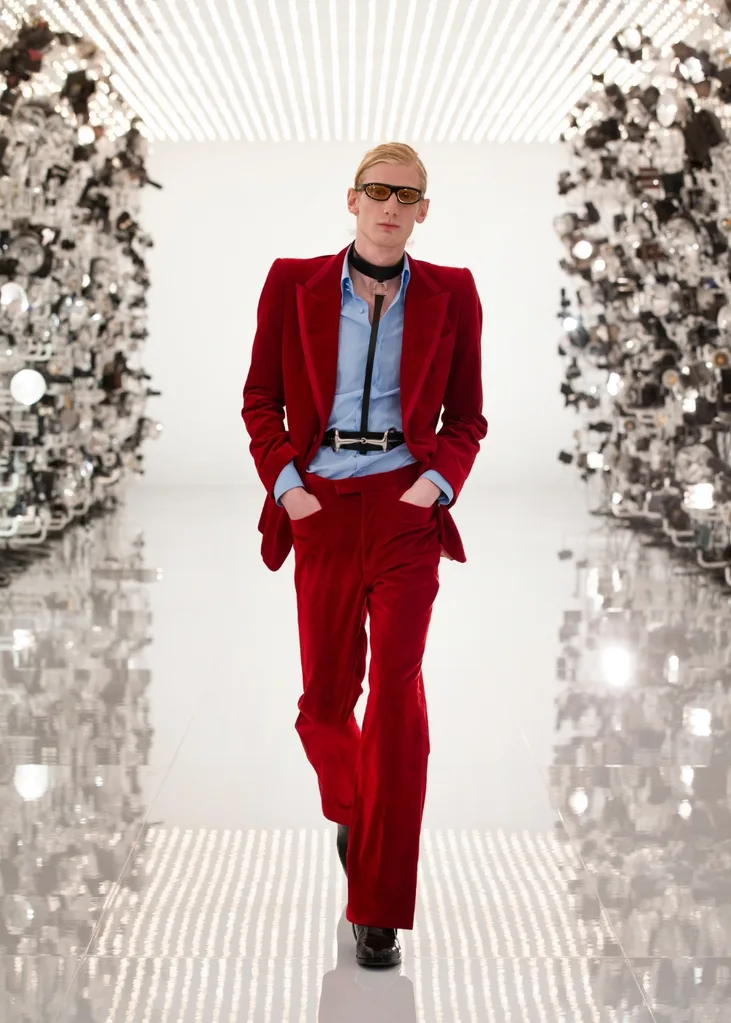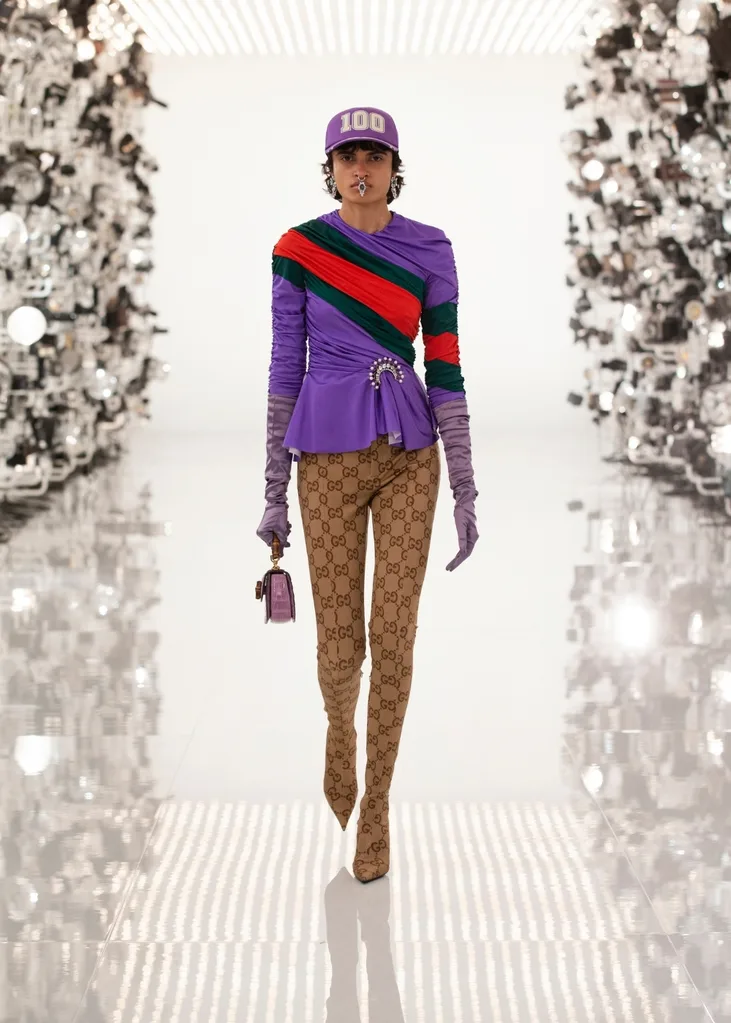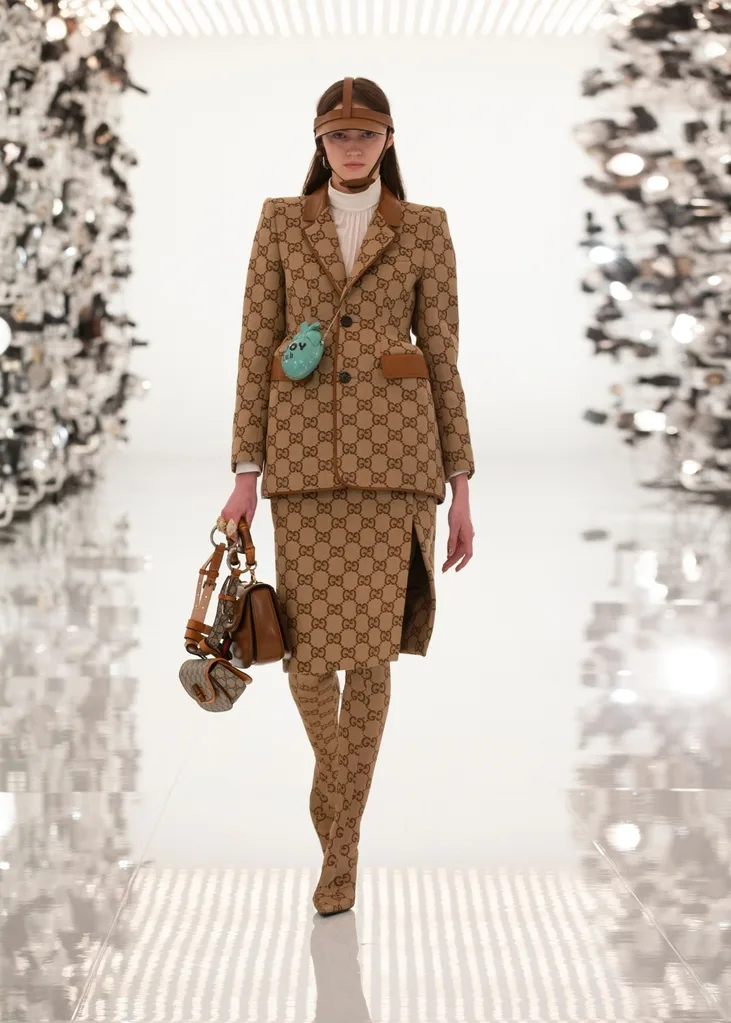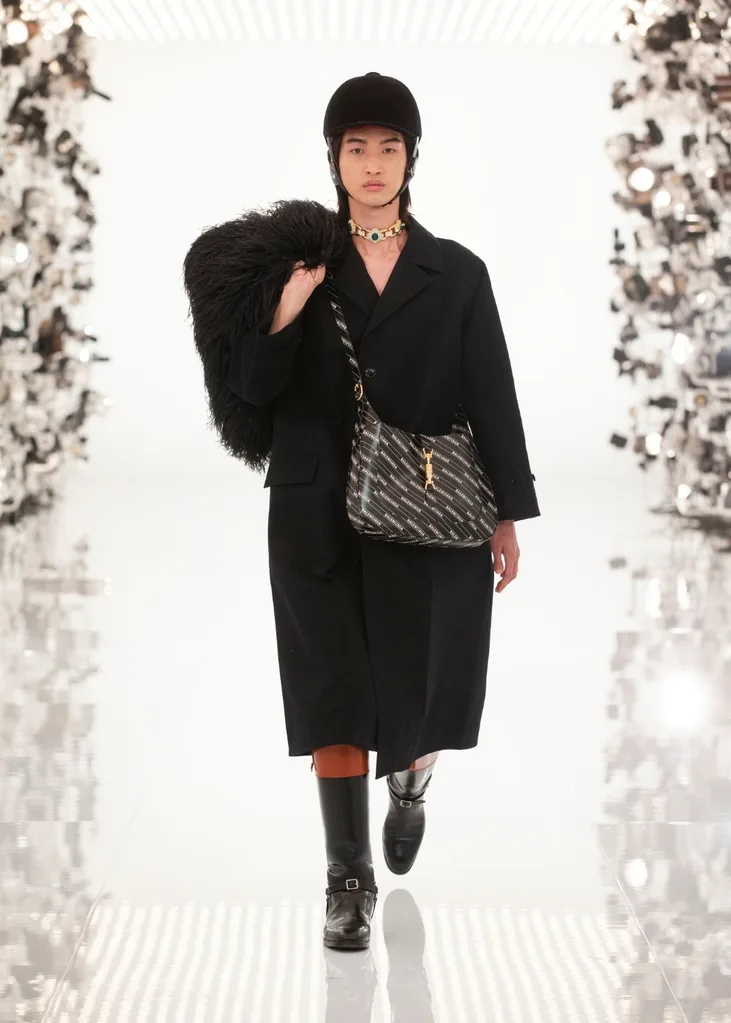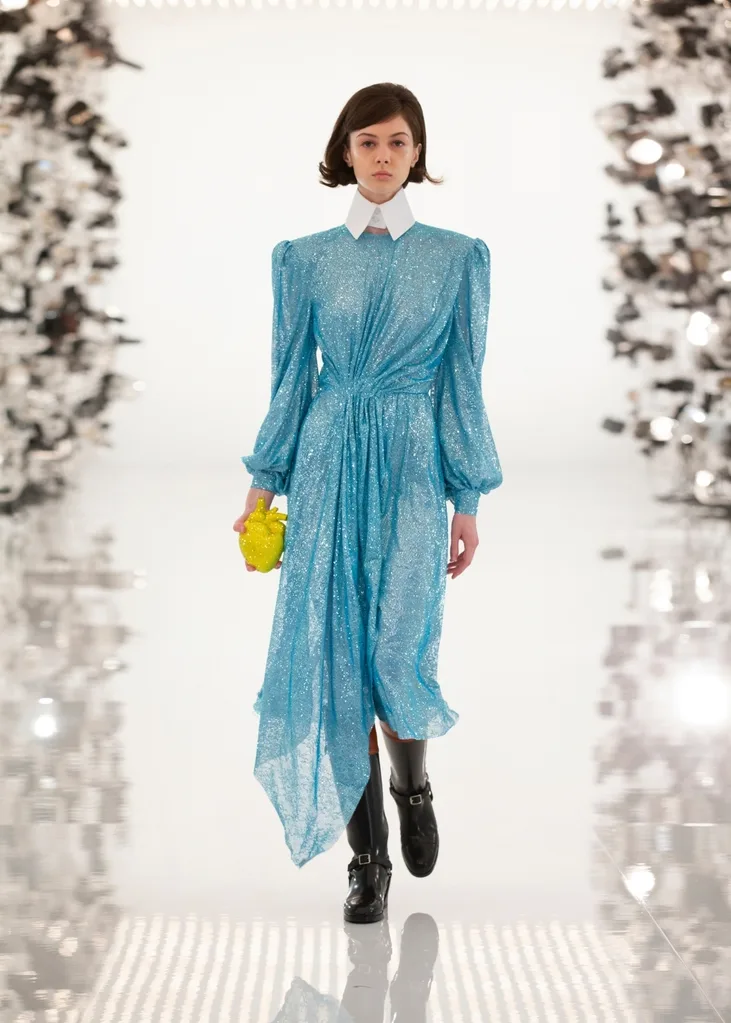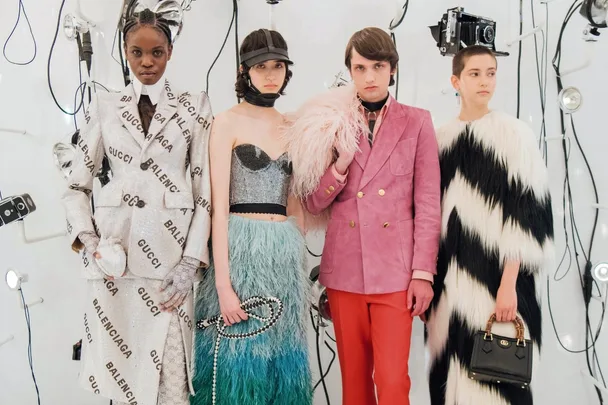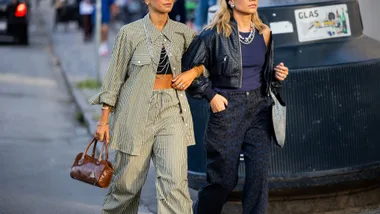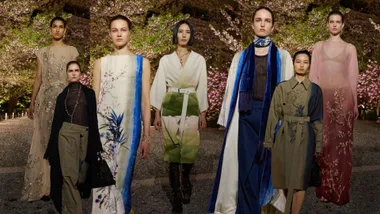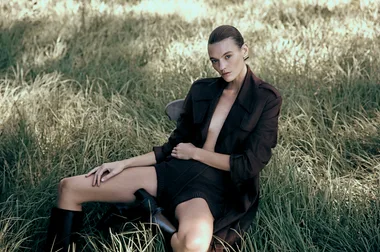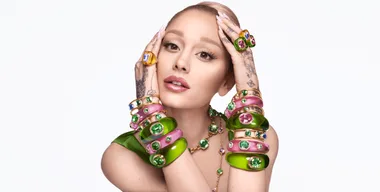There are few designers making the kind of agenda-setting fashion moves like Gucci’s Alessandro Michele. His is a tenure that has already proven to be boundary-shattering, yet simultaneously so totally pop, that he will be remembered as having influenced a generation of dressers.
When he stepped into the role of creative director of Gucci in 2015, he had big shoes to fill, following Frida Giannini, and Tom Ford, both of whom made names for themselves with collections at the Kering-owned luxury label. But he has fashioned a legacy wholly his own, and the Gucci Aria, celebrating the 100th birthday of the brand, proved it.
Not only did Michele honour the legacy of Gucci by tipping his hat to past designers, influences and themes, but made it totally his by utilising the power of distortion. The first look was a red velvet suit – a nod to Ford’s 1996 tuxedo that “made Gwyneth Paltrow famous” – and there were plenty of equestrian looks that were fetishised with the addition of whips and harnesses.
But perhaps the most subversive move of all was the presence of Balenciaga in the collection. In the lead up to the show, there had been plenty of rumours that it would be a collaboration between Michele and Balenciaga creative director Demna Gvasalia. Those rumours weren’t wrong, but they weren’t entirely right, either.
Rather than a collaboration, it felt more like Michele dipped into the Balenciaga house and borrowed silhouettes and symbols for the collection: The sharp shouldered blazers, hourglass suit jacket and floral patterns we’ve seen at Gvasalia’s Balenciaga were all present but made in Michele’s image. The iconic legging boots, too, were Gucci-fied with the Gucci logo. It also worked in reverse, in cases like the classic Jackie bag which was emblazoned with the Balenciaga logo.
In Michele’s own words, it was a hack, or to be more specific, the result of his viewing Gucci as his personal “hacking lab”. “An alchemical factory of contaminations where everything connects to anything. A place where thefts and explosive reactions happen: a permanent generator of sparkles and unpredictable desires,” he wrote in the show notes. In his vision, honouring the 100-year legacy of Gucci means completely messing with anyone’s expectations of what that might look like in 2021. “Because the promise of a never-ending birth is only renewed through an evolving capacity.
“Crossing this threshold, I have plundered the nonconformist rigour of Demna Gvasalia and the sexual tension of Tom Ford; I have lingered over the anthropological implications of what shines, working on the brightness of fabrics; I have celebrated the equestrian world of Gucci transfiguring it into a fetish cosmogony; I have sublimated Marilyn Monroe’s silhouette and old Hollywood’s glamour; I sabotaged the discreet charm of the bourgeoisie and the codes of men’s tailoring.”
What’s more, Michele used the soundtrack to further exemplify how firmly implanted in the zeitgeist Gucci has become. From Lil Pump’s ‘Gucci Gang’, to ‘Gucci Coochie’ by Die Antwoord and ‘Green Gucci Suit’ by Rick Ross and Bhad Barbie, the designer said: Yes, that song is about us. And the clothes demonstrated why.
In the end, the collection will no doubt be one that people talk about for years to come and signals a potential new direction for fashion where the radical is pursued in lieu of honouring tradition or form. It’s never been more exciting to be a fashion spectator.
